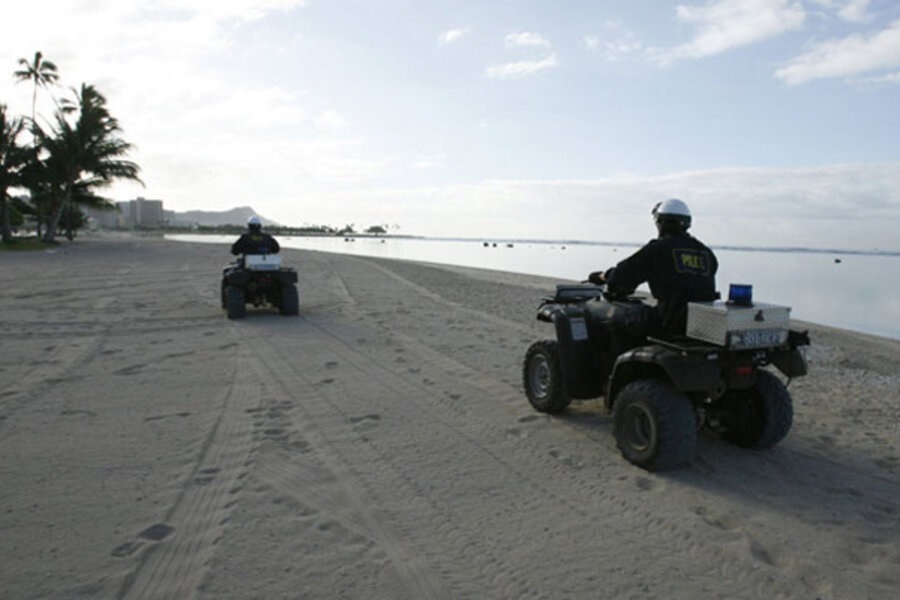Hawaii tsunami warning: Hawaii begins evacuation on coasts
Loading...
| HONOLULU
Hawaii sounded warning sirens and began evacuating residents near the coastline on Saturday ahead of a tsunami generated by a massive earthquake in Chile.
Civil defense sirens sounded across the island state at 6 a.m. local time (1600 GMT) after the Pacific Tsunami Warning Center said a tsunami was generated that could cause waves of up to 8 feet and damage along the coasts of all the Hawaiian islands.
"We're not expecting this to be a worst-case scenario, but we are expecting dangerous waves to appear on shore," said Charles McCreery, director of the Pacific Tsunami Warning Center in Hawaii.
IN PICTURES: Images from the 8.8 magnitude earthquake in Chile
Civil defense officials sent firefighters and firetrucks into neighborhoods bordering the coast, and used loud speakers urging residents to evacuate.
Gas stations in Honolulu were jammed with lines of cars stretching a quarter of a mile in some places as residents waited to fill gas tanks before evacuating.
Buses were to patrol beaches and take people to parks in a voluntary process expected to last five hours.
"Urgent action should be taken to protect lives and property," the Warning Center said in a bulletin. "All shores are at risk no matter which direction they face."
The center has issued a Pacific-wide tsunami warning that included Hawaii and stretched across the ocean from South America to the Pacific Rim. Geophysicist Victor Sardina said the Hawaii-based center was urging all countries included in the warning to take the threat very seriously.
"Everybody is under a warning because the wave, we know, is on its way. Everybody is at risk now," he said in a telephone interview. The warning follows a huge earthquake in Chile that killed at least 122 people and triggered tsunamis up and down the coast of the earthquake-prone country.
Updated estimates from the center forecast the first tsunami, which is a series of several waves in succession, would hit Hawaii at 11:05 a.m. Hawaii time (2105 GMT) in the town of Hilo on the Big Island of Hawaii, with waves around 8-feet high.
POPULAR BEACHES
Smaller waves were then expected to hit Honolulu, and its popular beaches like Waikiki, roughly 20 minutes later. Sardina said the center was looking at Hilo Bay on Hawaii Island as a worst-case scenario right now.
"The shape of the bay favors the waves gaining in height," he said in a telephone interview.
The last time a destructive tsunami struck Hawaii was on May 23, 1960, when much of downtown Hilo was destroyed and 61 people killed in the aftermath of an 8.5 magnitude earthquake off the west coast of South America, according to the U.S. Geological Survey.
Wave heights in Hilo Bay reached 31 feet.But since then, tsunamis have largely been a no-show. The last time civil defense officials ordered evacuations was in 1994, prompting concern that some Hawaii residents may not take this event seriously.
The West Coast and Alaska Tsunami Warning Center also said a tsunami advisory is in effect for the coastal areas of California, Oregon, Washington, British Columbia and Alaska from the California-Mexico border to Attu, Alaska.
A tsunami advisory means that a tsunami capable of producing strong currents or waves dangerous to persons in or very near the water is imminent or expected. But significant, widespread inundation is not expected for areas under an advisory.
IN PICTURES: Images from the 8.8 magnitude earthquake in Chile





